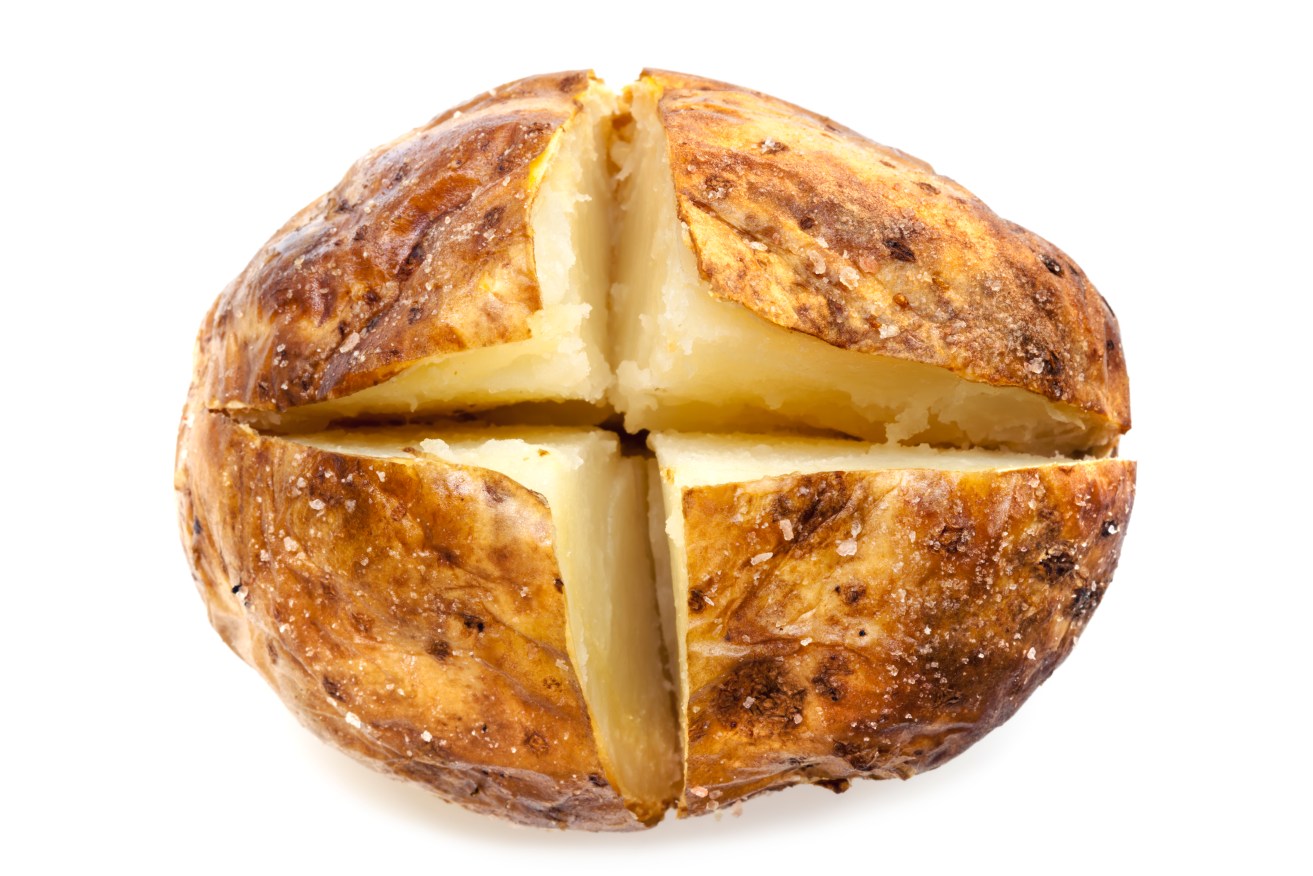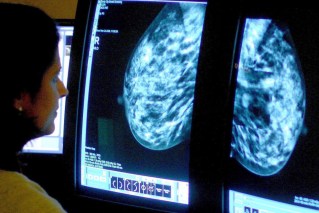Your liver can take cold comfort in a day-old spud’s ‘resistance starch’


By letting it cool overnight, the humble bakes potato becomes powerful medicine. Photo: Getty
Australia is wobbling its way into an epidemic of liver disease. Booze is not involved. We are literally eating ourselves to death.
And while there is no medicine that can reverse the condition, the humble baked potato might slow it down and lessen the damage.
New research has found that a daily dose of resistance starch – which is what you get when you bake a potato and let it cool overnight – “can alter gut bacteria composition and lower liver triglycerides and liver enzymes associated with liver injury and inflammation”.
What this means: resistant starch works to prevent non-alcoholic fatty liver disease (NAFLD).
This is no small thing for Australians.
Let’s tease this apart
Non-alcoholic fatty liver disease(NAFLD) – a condition that often goes undiagnosed – is a leading cause of cirrhosis (scarring) and primary liver cancer.
NAFLD is caused by a buildup of fat in the liver. Apart from damaging the liver, it complicates other conditions, such as type 2 diabetes and cardiovascular disease.
It’s thought that about one in three Australians have the disease and too few are dealing with it.
As we reported in 2021, Melbourne researchers found that at least 36 per cent of regional Victorians are living with NAFLD – with 45 per cent of people over the age of 60 affected.
The reality is, NAFLD is reversible – by eating more vegetables and fruit, and otherwise a healthier diet, and by getting off the couch and doing a little exercise every day.
Eat less, move more.
It’s the same advice you’ll have heard from your doctor. It’s the same advice that most of us choose to ignore.
Hail the hero potato
You might be thinking: hang on, potatoes are bad for you.
They can be, sure.
Super starchy, potatoes are quickly digested and tend to spike blood sugar levels. This is why diabetics are meant to cut back on potatoes and other starchy foods.
But a magical thing happens when potatoes – and other starchy foods such as rice and pasta – are cooked and then cooled.
They become rich with resistant starch.
What is resistant starch?
Regular starch burns up quickly in the small intestine, and little of the potato survives long enough to pass through to the large intestine.
Resistant starch gets its name from how it ‘resists’ digestion in the small intestine.
When it moves into the large intestine, it behaves like a form of fibre by fermenting and feeding the resident ‘good’ bacteria.
All of which means that your yummy delinquent potato is now a hero – helping nourish your microbiome – the bacterial make up of your gut.
Which brings us back to the new study
In animal studies, resistant starch, by positively affecting gut health, has been shown to have a positive effect on metabolism.
A team of international researchers wondered if similar gains could be made in humans.
Looking at NAFLD was an obvious starting point.
Previous research suggested that NAFLD “is associated with perturbed gut microbiota”.
For example, people with early-stage NAFLD “already have an altered gut bacteria profile”.
It made sense, then, to investigate the impact of resistant starch as a potential treatment for NAFLD.
The investigation
The team recruited 200 NAFLD patients and provided them with a balanced dietary plan.
Half of the patients, the experimental group, also received a resistant starch powder derived from maize.
The other half, the control group, received received calorie-matched non-resistant corn starch as a control.
All were instructed to drink 20 grams of the starch mixed with 300ml of water before meals twice a day for four months.
Four months later
At the end of the experiment, participants who received the resistant starch treatment had nearly 40 per cent lower liver triglyceride compared to patients in the control group.
(Triglycerides are the most common type of fat in your body. They come from foods, especially butter and oils. Having a high level of triglycerides in your blood can increase your risk of heart disease.)
Further, patients who had the resistant starch treatment also saw reductions in liver enzymes and inflammatory factors associated with NAFLD.
These benefits were still apparent even when statistically adjusted for weight loss.
What the researchers say
Dr Yueqiong Ni is the paper’s co-first author at Shanghai Sixth People’s Hospital and Leibniz Institute for Natural Product Research and Infection Biology – Hans-Knöll-Institute in Germany.
She said: “Our study shows resistant starch’s impact in improving patients’ liver conditions is independent of body-weight changes.”
Gianni Panagiotou is Professor for Microbiome Dynamics at the University of Jena, Germany, and the study leader. He said:
“We found out that the participants in the study benefited from a resistant starch diet, as the accumulation of fat in the diseased liver was reduced.
Furthermore, we observed an increase in certain types of bacteria in the gut of the participants.”
He said these bacteria “positively influenced fat reduction and transport in the liver”.
In addition, he said, “reduced NAFLD and inflammation biomarkers indicate an alleviation of liver damage”.
In other words, NAFLD was seen to be reversed.
Resistant starch – that beautiful baked potato – may not be your get-out-of-jail free card. But it might get you part of the way out of your metabolic crisis.
In the meantime: eat better, eat less, and get moving.








